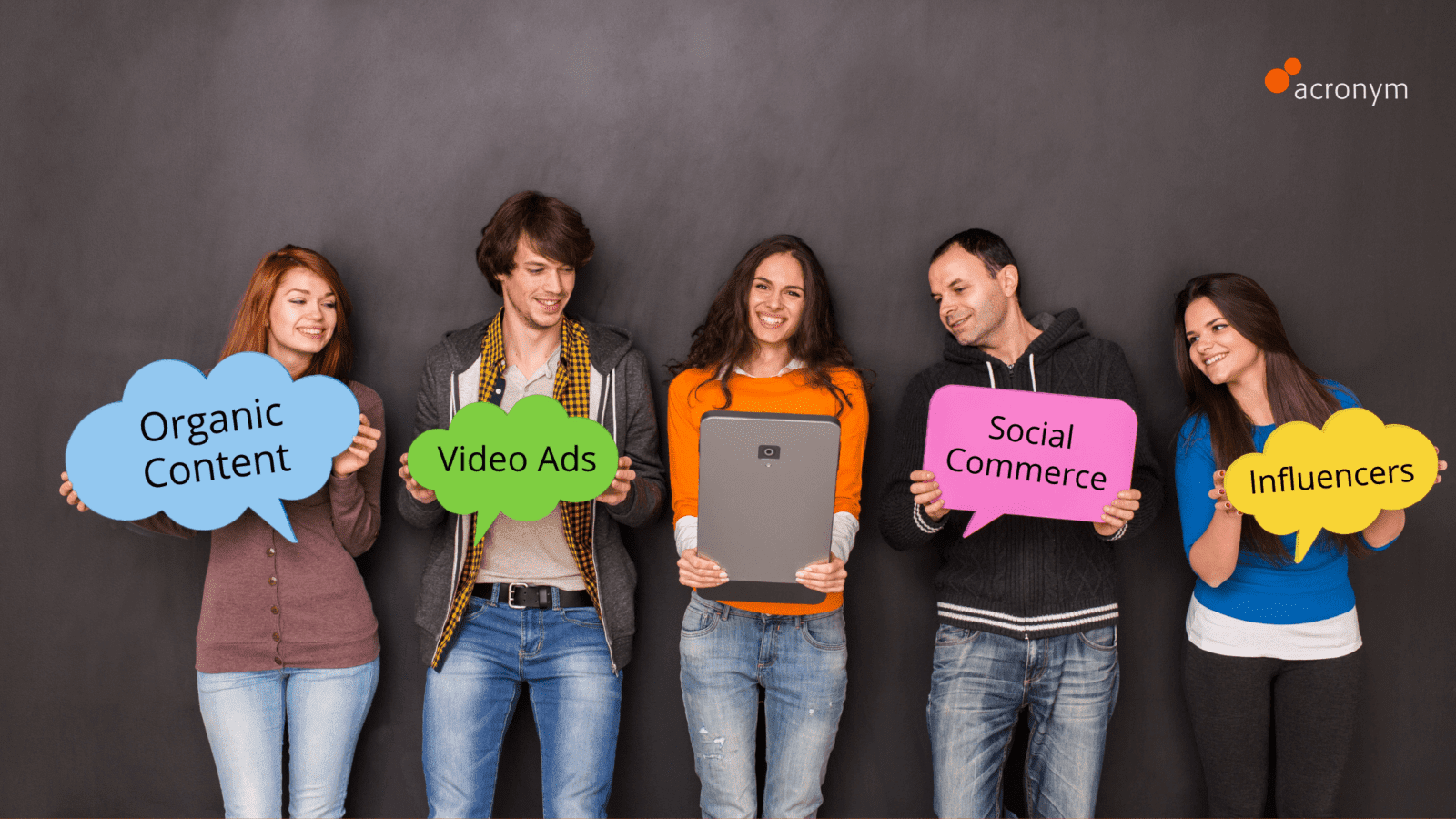 Happy Social Media Day! Paid and organic social media are more often than not put into silos, so, we wanted to celebrate the true synergy of paid and organic by sharing our views on how they work together.
Happy Social Media Day! Paid and organic social media are more often than not put into silos, so, we wanted to celebrate the true synergy of paid and organic by sharing our views on how they work together.
eMarketer found that 29.6% of US consumers completed a purchase via social media, showcasing that this audience is engaged and these platforms influence consumer purchase/lower funnel decisions.
Advantages of Organic Social Media Engagement
An organic user proactively looks for content, engages with your feed, and provides valuable feedback. They are a qualified, loyal audience that every company should pay attention to. Your organic audience will amplify your message by sharing your content with their friends and networks without requiring any advertising dollars, so it is vital to make your content engaging and sharable. A vigilant brand will use platforms like Sprout Social to help monitor brand engagement and sentiment on Facebook, Instagram, Twitter, etc., through social listening. By listening to your audiences and responding to feedback and messages, you become a key player in their decision-making process. You can get ahead of some of your consumer needs and expectations.
Additionally, organic social media platforms provide an excellent opportunity to share brand messaging, positioning and communicate with your existing social base. Audiences on engaged channels will dictate any changes they would like to see, giving brands the chance to be transparent with mission statements, share changes to products, and offer a first look to those actively participating with your social posts. This is a great audience to use for awareness and for scaling broad messages.
Advantages of Paid Social Media Campaigns
Paid Social flexes the ability to expand reach by using targeting that is relevant and scalable for your brand. You can target based on location, employment, household income for U.S. audiences (although there are exceptions with the special ad category), gender, age, and interests, creating more nuanced audiences based on campaign goals and channels. LinkedIn is for C-Suite targeting and is much more B2B-focused, whereas purchases for a beauty products are more likely to happen on Facebook, Instagram, Snapchat, or TikTok.
How Organic and Paid Social Media Work Together
Working from channel insights, you can use organic contextual targeting and social listening and leverage these insights to develop personas and targeting segments. You can also expand on formats and tests you’ve performed in organic social media without running similar A/B tests that require a budget. We recommend create similar audiences to users who engage and interact with organic videos and target your followers to better focus on lower conversion events (such as lead ads or purchases). This can help expand your reach to a new audience. However, that is not where the cohesive conversation ends. Both organic and paid social media have a place in your marketing strategy.
Suppose a post performs well and gains high engagement (likes, comments, shares, etc.) organically. In that case, this success is something you will want to scale with paid dollars to capitalize upon the post’s organic success. Learnings from organic should inform paid, and vice versa, whether it is insights from comments received on posts or best-performing creative types. Leverage that success to a conversion or store locator ad and include lookalikes from your first-party data and site traffic to expand the impact of your organic posts. This will also help you remarket to loyal existing customers and drive impact to top consumers with special promotions and new product launches. Ensure you are using brand-approved hashtags on Twitter and Instagram to continue trending conversations.
Paid and Organic Social Media Play a Role In the Customer Journey
Successes from paid social media can be shared on organic social media, and organic social media successes should be shared on paid social media. These conversations/successes should be part of your holistic marketing plan instead of organic and paid social media working in silos, as each has its place in the consumer journey and ad conversion funnel. This goes beyond social media and should be a strategy utilized across all your digital marketing campaigns.
Your most influential advocates for your brand’s experiences and products are your social media followers. Feedback on paid and organic social media can work in tandem for updates, tweaks, and optimizations you might need to make as a brand. Potential influencers and UGC content are ripe for the taking, and brands can amplify these assets at an efficient ROAS without the content burden on your team. This applies to all paid and organic channels and can be used across channels like Snapchat, Facebook, TikTok, and Instagram.
According to Ad Roll, “On Facebook, organic posts only reach about 2% of followers, and that number is steadily declining.” Using the qualified nature of organic with the sophisticated tools of paid, you can cater to and expand your social presence as a whole while being both relevant and scalable. If you do not use insights from both, you will be missing an essential piece of the social media marketing puzzle, and your content marketing campaigns will lack impact.
POV by Gellena Lukats, Director of Paid Social Media and Mary Sutter, Director of Organic Social Media for Acronym










